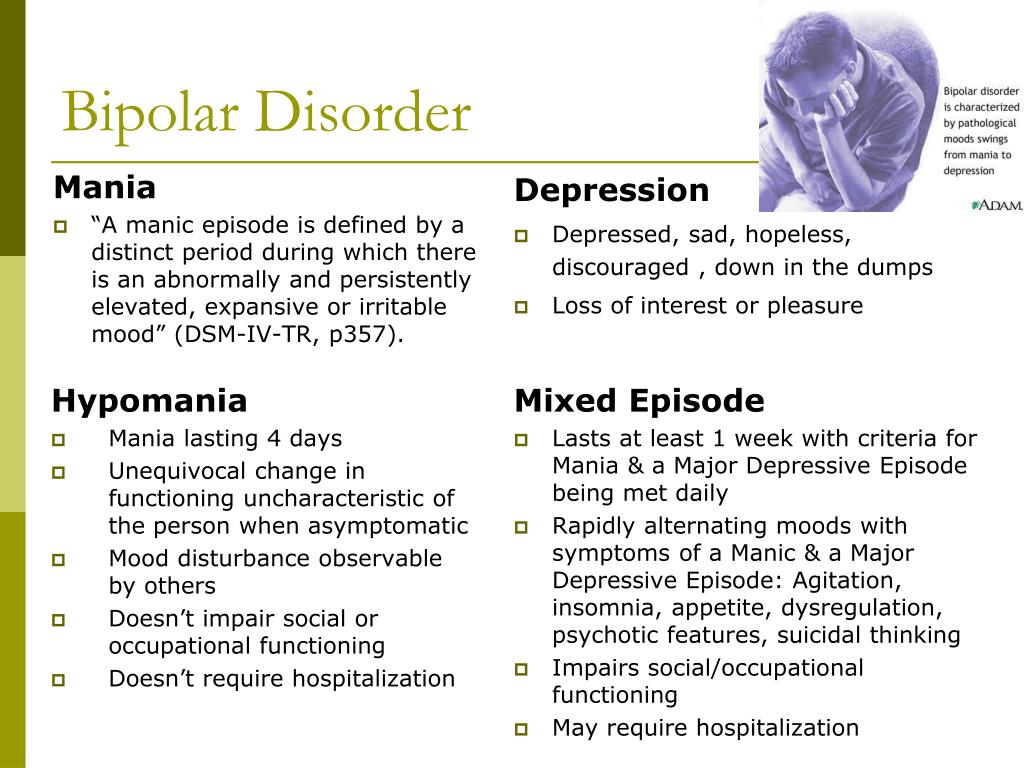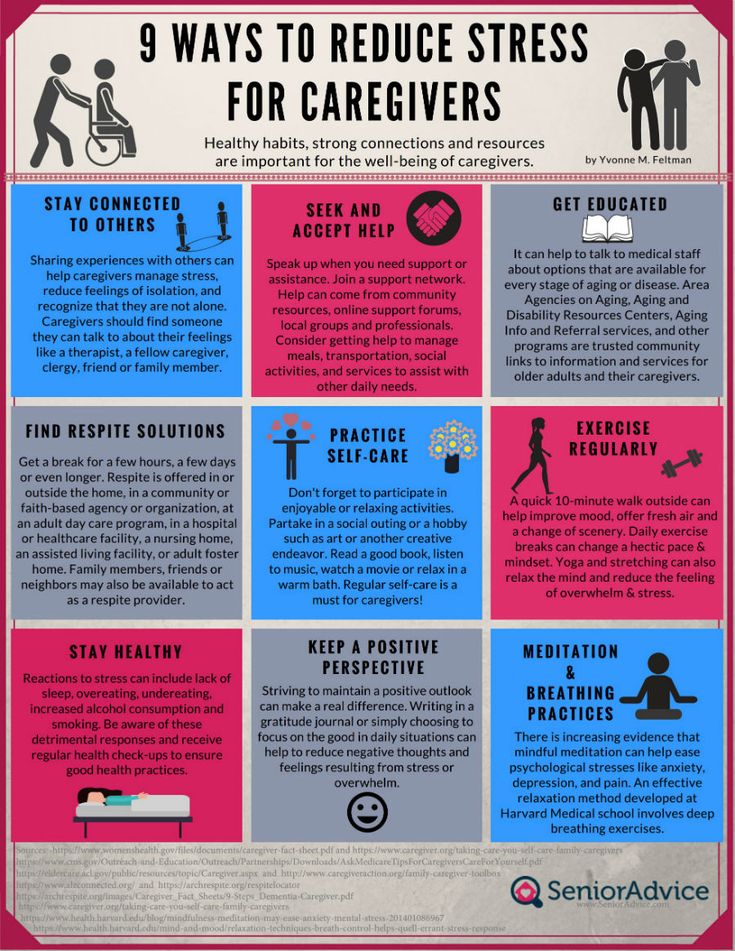Fear of depth
Fear of Depths Phobia - Bathophobia
Bathophobia means the fear of depths. It is fear or anxiety associated with the sea or water bodies of various types, though; many Bathophobic individuals are also known to fear tunnels, mountain valleys or caves.
The word Bathophobia originates from Greek word bathios which means “deep or depth” and phobos meaning “aversion, dread or fear”. People living with this phobia try to avoid lakes, swimming pools, seas, hallways, wells, mountain valleys, tunnels or all other things that have depth associated with them. When they do encounter these, they tend to experience apprehension or have a full blown panic attack. They often realize that their fear is irrational however they are unable to overcome it. In some extreme cases, their fear may even interfere with their daily lives.
What are the causes of Bathophobia?
Like many specific phobias, the causes of Bathophobia are often unknown; however, most experts believe that they stem from negative or traumatic events in the individual’s early life. Thus, having witnessed a loved one drown, or even watching an older adult/caregiver/parent show a fear of depths can trigger Bathophobia. One Bathophobe recalls having been asked by his teacher to plunge his hand inside a 5 gallon jar for removing dead creatures that their class was studying in Biology. He recalls experiencing a “shiver and feeling of great apprehension” at the thought of encountering “the unexpected”. This incident led him to fear depths of all kinds even into his adulthood.
Anxiety and phobias related to deep water bodies such as seas, rivers etc can be precipitated by number of stressors and are often evolutionary. The ocean has, right since times unknown, embodied extreme fears of mankind. These include falling headlong into an abyss, being attacked by dangerous sea predators, fearing overhead environments etc.
Media, TV and movies, news reports of accidents related to depths can also instill such fear in high strung or anxious individuals.
Many medical conditions are also known stressors that lead to anxiety and phobias: diabetes, menopause, PMS, certain cardiac conditions, thyroid or parathyroid related illnesses combined with daily environmental stress can be deadly combinations that could trigger the fear of depths.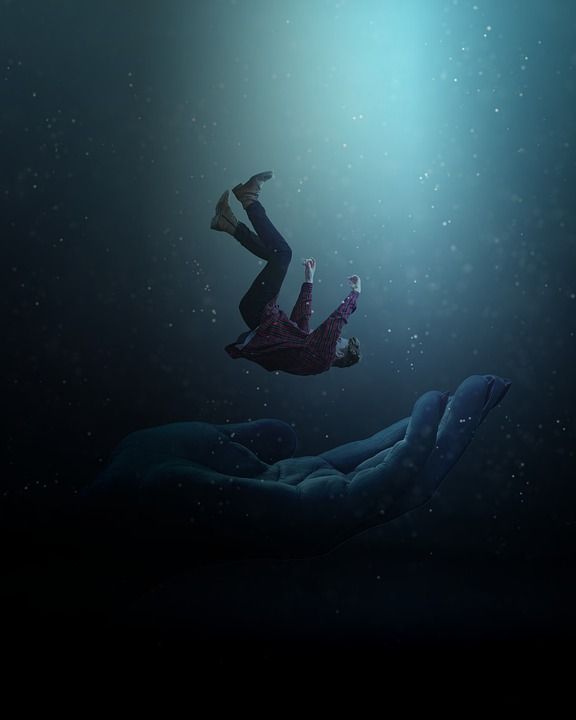
Symptoms of fear of depths
The symptoms of fear of depths phobia vary from person to person and situation to situation. Like in all other specific phobias, the symptoms of Bathophobia include:
Quiz: Do You Have an Anxiety Disorder? Take the Test Now
- Feeling nauseated
- Experiencing hot and cold flashes
- Shivering, trembling, trying to flee from the place
- Hysterical response like crying, screaming
- Feeling dizzy, having an elevated heart rate, breathing in rapid and deep manner
- Feeling total loss of control, feeling ‘unreal’.
- Having thoughts of death or dying.
- Feeling trapped or unable to escape
- Avoidance behavior: avoiding the beach and other water bodies or excursions that involve valleys and mountains or traveling through tunnels, etc.
Whatever its symptoms; Bathophobia can cause great emotional turmoil that might interfere with one’s ability to function normally and might completely disrupt the phobic’s day to day life.
Overcoming the fear and anxiety associated with depths
Psychological techniques to overcome Bathophobia
Many people wish to scuba dive. They might have seen pictures and videos of people diving and having a good time. However, their fear of depths prevents them from enjoying activities related to the sea. The use of medications in such individuals has shown favorable results in overcoming stress and anxiety associated with diving. Some examples of medicines are imipramine (Tofranil), propranalol (Inderal) or alprazolam (Xanax). However, doctors often hesitate to prescribe these as they are known to cause extreme drowsiness that can impair a diver’s ability to focus and concentrate.
Non-pharmalogical techniques are the best bet to overcome fear of depths phobia. To name a few: Hypnosis, systematic desensitization, CBT or cognitive behavior therapy, Implosion therapies etc have all been known to successfully help people overcome Bathophobia.
A series of mental exercises such as imagining oneself approaching a valley or deep water body, or stepping into the water body or wearing the scuba diving/paragliding equipment and actually diving are known methods of overcoming one’s anxiety response. Some other methods include in-vivo exercises such as actually standing in waist deep water or walking in the pool etc.
Some other methods include in-vivo exercises such as actually standing in waist deep water or walking in the pool etc.
These are a few proven methods of overcoming Bathophobia once and for all.
Bathophobia (Fear of Depths) - Psych Times
Bathophobia is the irrational fear of depths. Someone experiencing this condition may find it extremely difficult to even think about depths, let alone be near them in real life. Their fear of depths may be due to the fear of the unknown. Their fear of depths may include the vastness of the ocean, caves, canyons, or anything else that is somewhat analogous.
People who suffer from bathophobia may also suffer from ligyrophobia (fear of loud noises), achluphobia (fear of darkness), or acrophobia (fear of heights), among others as all of these phobias share a similar theme. The theme that all of these phobias appear to share is that all of the specific fears associated with each phobia seem to all be evolutionarily advantageous.
AdvertisementsFor instance, someone suffering from bathophobia or acrophobia may be due to centuries and centuries of evolutionary adaptations. This is likely the reason as to why most people become extremely anxious when near the edge of a cliff or when overlooking the railings on a balcony several stories high. This innate terror that most of us experience is likely meant to help protect us from imminent danger.
This is likely the reason as to why most people become extremely anxious when near the edge of a cliff or when overlooking the railings on a balcony several stories high. This innate terror that most of us experience is likely meant to help protect us from imminent danger.
Someone with severe bathophobia may experience anxiety that is so extreme that they may even endure panic attacks that may force them to be hospitalized. However, this is likely to be a rare occurrence.
AdvertisementsSymptoms of Bathophobia
People suffering from bathophobia will find themselves enduring heightened amounts of anxiety that may greatly hinder their day to day life. For instance, someone living near a lake, ocean, or mountains may be highly anxious individuals due to their fear of depths being difficult to avoid. Nevertheless, avoidance may still be something that someone with bathophobia may try to implement in an attempt to relieve their intrusive anxiety.
Someone with bathophobia may make major life decisions that are based solely on their irrational fear of depths. For example, they may choose to live in areas that are more inland to avoid oceans, as well as areas absent of lakes due to the depth of them. They may also choose to live in very flat areas to ensure that they will not encounter mountains or cliffs.
For example, they may choose to live in areas that are more inland to avoid oceans, as well as areas absent of lakes due to the depth of them. They may also choose to live in very flat areas to ensure that they will not encounter mountains or cliffs.
If someone is also suffering from an additional disorder such as generalized anxiety disorder (GAD) or obsessive compulsive disorder (OCD), among others, then they may experience exacerbated symptoms of bathophobia. For example, someone with OCD may find themselves obsessing about things throughout their day to day life. So, it is not implausible to conceive such a person eventually becoming obsessed with their fear of depths.
AdvertisementsBelow, you will see some more common symptoms of this phobia:
- Intense anxiety when near great depths
- Anxiety at the mere thought of depths
- Unable to control very strong emotions
- May experience panic attacks
- Muscle tension, shakiness, and sweating
Causes of Bathophobia
There is no known cause of bathophobia. However, there is a consensus among most mental health professionals that both genetics and one’s environment play significant roles in someone developing any give mental disorder. So, someone with a family history of mental disorders, especially anxiety disorders may have a higher chance of developing bathophobia. This may be due to them then having a higher chance of being genetically predisposed to developing mental illness.
However, there is a consensus among most mental health professionals that both genetics and one’s environment play significant roles in someone developing any give mental disorder. So, someone with a family history of mental disorders, especially anxiety disorders may have a higher chance of developing bathophobia. This may be due to them then having a higher chance of being genetically predisposed to developing mental illness.
If someone were to have a genetic predisposition to develop mental illness, then it may only take them experiencing some sort of traumatic event for them to develop full blown bathophobia. Such a traumatic event which may cause someone to develop an irrational fear of depths may be that they once fell off of a very high platform or that they were once shipwrecked. Such experiences may be so emotionally damaging that it may lead them to develop bathophobia insofar as they have the genetic makeup to do so.
Another potential cause of bathophobia may be that they were already suffering from a different mental disorder beforehand. For instance, someone suffering from GAD may be a highly anxious person who finds day to day aspects of life to be very challenging. So, it is quite plausible to conceive that someone with GAD may develop bathophobia by concentrating a great deal of their daily fears toward depths. The same hypothetical can be seen with other anxiety disorders like OCD, for example.
For instance, someone suffering from GAD may be a highly anxious person who finds day to day aspects of life to be very challenging. So, it is quite plausible to conceive that someone with GAD may develop bathophobia by concentrating a great deal of their daily fears toward depths. The same hypothetical can be seen with other anxiety disorders like OCD, for example.
Though we can speculate as to what the many possible causes of bathophobia may be, the overwhelming consensus is that genetics and environment play crucial roles in the development of any given mental disorder.
AdvertisementsBathophobia Treatments
Just as there is no known cause of bathophobia, there is also no known treatment method specifically designed for this disorder either. However, as is the case with virtually all phobias, exposure therapy is one of the most beneficial forms of treatment for people suffering from phobias.
Exposure therapy works by having the therapist slowly expose the patient to that which they fear over a given period of time. Though the patient will likely experience a great deal of anxiety when exposed to their fear, the goal is for them to eventually be desensitized from their fear so that it will bother them less over time.
Though the patient will likely experience a great deal of anxiety when exposed to their fear, the goal is for them to eventually be desensitized from their fear so that it will bother them less over time.
It is imperative to ensure that the therapist implementing exposure therapy is very knowledgeable and experienced with treating phobias. The importance of this lies in the fact that if the patient is exposed to too much too soon, then this may have an opposite affect by worsening their bathophobia as opposed to helping to desensitize them from it.
The therapist may expose the patient to depths by showing them pictures or videos of areas with great depths. These images will likely give the patient a high amount of anxiety, but if implemented correctly, the end goal will be the patient being less affected by the images over time. Thus, minimizing their symptoms of bathophobia.
AdvertisementsYoga Poses for Bathophobia
There are numerous different yoga poses that can substantially benefit someone who is suffering from bathophobia. In part, this is due to the meditative state of mind that yoga tends to emit in those who practice it on a consistent basis. Yoga can be thought of as meditation in motion. It can help to relieve some of the anxiety associated with bathophobia due to the mere fact that by engaging in yoga, your attention will be redirected to something more productive.
In part, this is due to the meditative state of mind that yoga tends to emit in those who practice it on a consistent basis. Yoga can be thought of as meditation in motion. It can help to relieve some of the anxiety associated with bathophobia due to the mere fact that by engaging in yoga, your attention will be redirected to something more productive.
There are many different types of yoga that someone with bathophobia can benefit from, such as hatha yoga or hot yoga, among many others. Nevertheless, regardless of the many different forms of yoga that exist, virtually all of them can help to relieve some of the stress and anxiety that is associated with bathophobia.
If you have never practiced yoga before, then it may be in your best interest to take a class or watch some guided videos that can help you through each pose. Just like with meditation, the more you practice yoga, the more adept you will become at it. Besides helping you to reduce your symptoms of bathophobia, you can also expect to acquire increased strength and flexibility, among other benefits.
Mindfulness-Based Stress Reduction (MBSR) for Bathophobia
MBSR is an 8-week evidence-based program that offers secular, intensive mindfulness training to help people who are suffering from anxiety, stress, depression, and other sorts of mental anguish. MBSR may be able to significantly help someone who is suffering from bathophobia as mindfulness meditation has been shown to be very beneficial for anxious people. In such a structured program, someone with bathophobia can expect to learn a plethora of different skills that can help them to relieve the intense anxiety that’s associated with their specific phobia.
Talk to your doctor or therapist to see if MBSR can help you to reduce the intensity of your symptoms of bathophobia, as well as where to find MBSR programs in your area.
Meditation for Bathophobia
There are many different forms of meditation that exists which can be very advantageous for someone suffering from bathophobia. Specifically, mindfulness meditation has been shown to be quite beneficial for helping people to enter into a more equanimous state. There are many different ways with which you can implement mindfulness meditation and there are also many different meditation apps which are designed to make things as easy as possible for you.
Specifically, mindfulness meditation has been shown to be quite beneficial for helping people to enter into a more equanimous state. There are many different ways with which you can implement mindfulness meditation and there are also many different meditation apps which are designed to make things as easy as possible for you.
Mindfulness has the potential to significantly help those suffering from bathophobia due to how it will help one to distract themselves from their fear by refocusing their attention onto something else that does not have any sort of emotional baggage attached to it, such as by focusing on the breath for example. This is one of the most basic ways that one can meditate and be present.
For someone with bathophobia in the midst of a panic attack, redirecting one’s attention to the various sensations felt when breathing can actually help to reduce the amount of mental anguish experienced during such an influx of anxiety.
AdvertisementsTo implement mindfulness meditation to help relieve one’s symptoms of bathophobia, you can do so by paying close attention to the way the muscles in your abdomen and chest contract and relax with every inhale and exhale. You can spend time dwelling on how it feels as your chest expands during each inhale and how it sinks in with every exhale.
You can spend time dwelling on how it feels as your chest expands during each inhale and how it sinks in with every exhale.
Besides focusing on your breathing, you can also focus on the sounds around you, the way your skin feels as you touch certain objects, the way foods taste, as well as the way certain aromas smell. Essentially, honing into your 5 senses can significantly help you to reduce some of the anxiety that is associated with bathophobia. Also, remember that it will take a lot of practice to become an adept meditator. So, practice is key.
Exposure Therapy for Bathophobia
As previously mentioned, exposure therapy is one of the most common ways to treat anxiety disorders such as bathophobia. It can be an efficient way to help desensitize the patient to their specific fears. Be that as it may, it is imperative that the therapist implementing it on their patient is very adept at doing so. For example, if the therapist were to slightly expose someone with bathophobia to their fear, then it may not be very effective as they may need a higher amount of exposure to truly trigger any sort of worthwhile change in the patient.
The same can be said for the antithesis of this scenario. If the therapist were to excessively expose someone with bathophobia to their fear, then doing so could be highly counterproductive to the point to where their bathophobia may become immensely worse due to the therapy alone. So, it is paramount that the therapist implementing exposure therapy for someone with bathophobia has a very strong sense of just how severe their symptoms are so that they can know the level of exposure that the patient will likely be able to handle.
Cognitive Behavioral Therapy (CBT) for Bathophobia
CBT is a psycho-social intervention that aims to improve one’s mental health. It is a modality that is often used to treat people suffering from anxiety disorders such as generalized anxiety disorder and OCD. Someone with bathophobia may also be able to benefit from CBT as well seeing as how it would allow them to have a much better understanding as to why they think and behave the way they do in relation to their irrational fears.
CBT can be immensely helpful for someone with bathophobia given the sheer automaticity of their symptoms. For example, when someone with bathophobia is exposed to their fear, they will almost always have an instantaneous subconscious reaction to their fear. Such a lack of introspection is likely a large part of why someone with this condition will suffer to the extent that they will. CBT can help you to take a step back and analyze your fears more deeply than you typically would.
Besides learning to be more fastidious with regards to understanding one’s specific fears, someone with bathophobia engaging in CBT can also expect to learn various other skills aimed at helping to relieve the anxiety caused by their condition.
Psychiatric Medications for Bathophobia
Anti-anxiety meds
These types of medications are very useful to help prevent panic attacks. Such drugs can be extremely useful for people suffering from severe bathophobia due to the fact that people with phobias often experience panic attacks as well. Some common anti-anxiety medications include Xanax, Valium, and Klonopin, among many others.
Some common anti-anxiety medications include Xanax, Valium, and Klonopin, among many others.
These types of drugs are not typically taken on a daily basis, but they may be insofar as their bathophobia is severe enough. However, this is something that you should first discuss with your doctor before you decide to do so to ensure that it is safe and effective.
Antidepressants
These types of medications aren’t only for people who suffer from depression as they can also help people suffering from anxiety disorders as well, such as bathophobia. Some common antidepressants are Paxil, Zoloft, and Lexapro, among several others. These drugs may be able to help reduce some of the symptoms of bathophobia.
These types of drugs are typically taken on a daily basis. They can indeed help prevent panic attacks from occurring, but they are more so used to help reduce people’s daily anxiety. Talk to your doctor to see if taking antidepressants can help to reduce your symptoms of bathophobia, as well as whether or not it is safe to do so.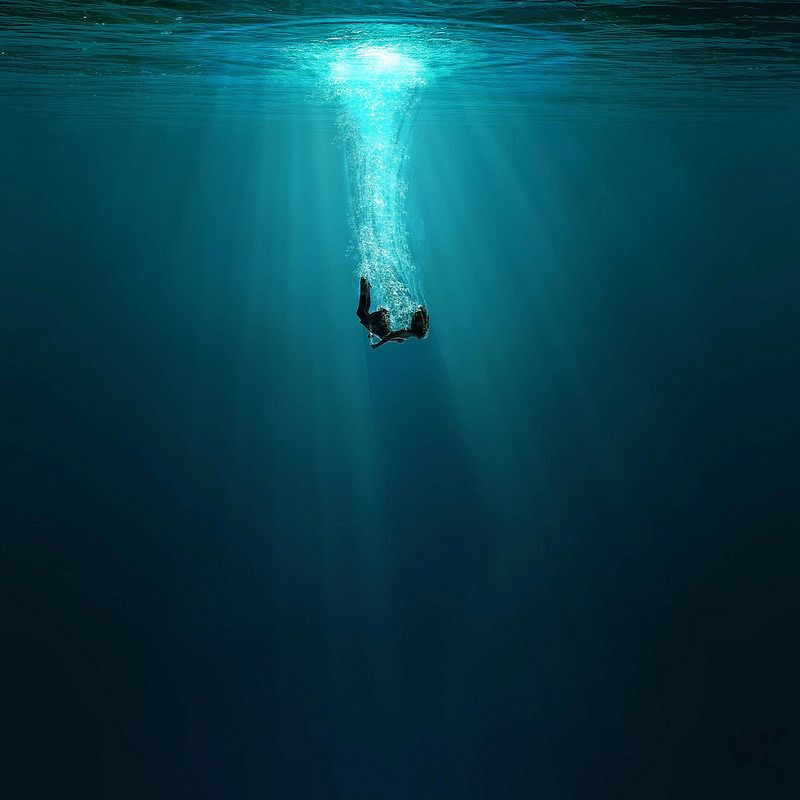
Exercise for Bathophobia
Exercise has been shown to be extremely beneficial for people suffering from anxiety disorders, including bathophobia. Specifically, cardiovascular exercise can significantly help to relieve one’s stress. This is not to say that weight-resistance training would not benefit someone with anxiety, but rather that aerobic exercise is has been shown to be more effective at releasing those feel good chemicals in the brain, such as endorphins.
According to the American Psychology Association, exercise can help to condition the mind to better cope with stressful situations. This makes sense when we take into consideration the high amount of stress that the body is put under during strenuous exercise. So, if you yourself are sedentary, then engaging in some form of aerobic exercise may be able to significantly help reduce your symptoms of bathophobia by making it much easier for you to cope with the anxiety and stress that’s associated with this condition.
There are many different aerobic modalities that you can partake in to help reduce your symptoms of bathophobia, such as swimming, biking, skiing, walking, and jogging. You can also acquire the many benefits of exercise by playing sports such as tennis, soccer, basketball, and racquetball, among many other sports. Engaging in some form of exercise consistently may be able to help relieve some of the pain associated with bathophobia over time.
Limiting Caffeine for Bathophobia
It is no secret that consuming large amounts of caffeine throughout the day can aid in making you more anxious. This makes sense when we look closely at how caffeine affects our body’s physiology. When we consume a high dose of caffeine, our heart will start to beat faster and we become more tense. Essentially, our body will begin to go into a “fight or flight” state of mind. Such a frame of mind is often a precursor for someone with bathophobia to experience panic attacks.
So, consuming little to no caffeine throughout the day may be able to significantly help reduce your day to day anxiety. Although doing so will likely not make all of your anxiety go away, it will indeed help you to reduce any unnecessary suffering that you would have otherwise experienced if you were to consume a large amount of caffeine.
Although doing so will likely not make all of your anxiety go away, it will indeed help you to reduce any unnecessary suffering that you would have otherwise experienced if you were to consume a large amount of caffeine.
Beverages like coffee and tea are often high in caffeine, as well as some energy drinks. In fact, even some foods have caffeine in them as well, such as dark chocolate. Being more conscious of your daily caffeine consumption may help you to reduce some of the symptoms associated with bathophobia.
Dialectical Behavior Therapy (DBT) for Bathophobia
DBT is a very effective form of treatment for people struggling with emotion regulation. It is often used to treat people suffering from borderline personality disorder. Nevertheless, it can also be very advantageous for someone suffering from anxiety disorders like bathophobia too. This is due to the numerous amount of coping skills you can expect to learn in a DBT group. These groups typically last about 6 months long and can have anywhere from two people to several people depending on how many join the group.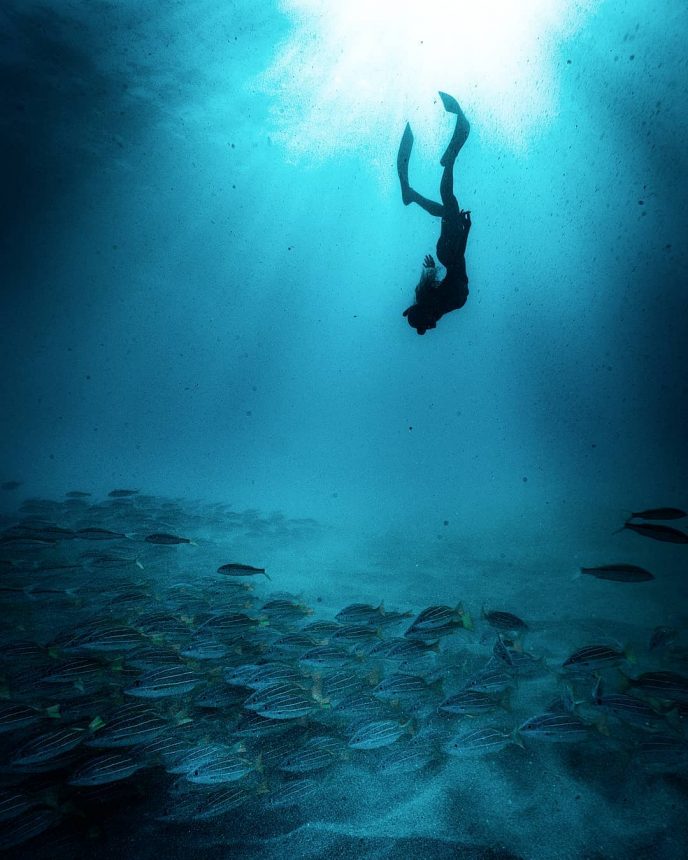
One very effective DBT skill for helping someone with bathophobia is half-smiling. This technique works by having you think about that which you fear or upsets you all while slightly raising the corners of your mouth by lightly smiling, thus the term “half-smiling.” Although, it isn’t enough to just think about your fear while half-smiling, you also have to try and refrain from entertaining those painful emotions that your specific fear may evoke.
Mindfulness meditation is also heavily used in DBT and can greatly benefit someone with bathophobia as it is done in a group setting, which helps to put the patient out of their comfort zone. These group mindfulness practices may include drinking warm tea to hone in on the sense of taste and tactile senses or simply focusing on the breath.
Coping ahead is another very useful DBT skill that can help someone with bathophobia. With coping ahead, you will want to find a place where you can sit down quietly without distraction.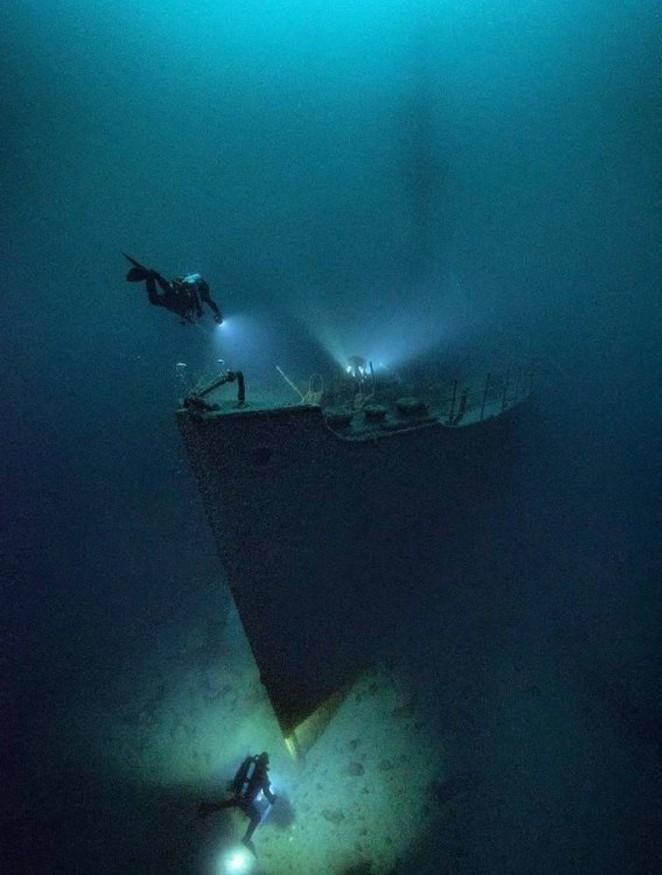 Close your eyes and then think about the many different possible scenarios where you would face your specific fear and overcome it or cope with it. Doing so will help you to be much better adept at coping with your bathophobia when you are actually exposed to the specific fear associated with it in real life.
Close your eyes and then think about the many different possible scenarios where you would face your specific fear and overcome it or cope with it. Doing so will help you to be much better adept at coping with your bathophobia when you are actually exposed to the specific fear associated with it in real life.
If you think you may be suffering from some of the symptoms of this condition, then you may benefit from therapy. Feel free to reach out to your doctor or local mental health clinic to see what your available options are and to see if there is any sort of discount or promo code available to help you with the costs of treatment, as well as if your health insurance will cover treatment costs.
How to overcome the fear of water? — blog I Love Supersport
Hydrophobia is the fear of water, it occurs in both adults and children. Sometimes, in order to reduce the influence of fears in a person's life, it is enough not to come into contact with them. But the fear of water is almost impossible to get around. A person with hydrophobia avoids open spaces on the water, does not swim, even if he can, starts to panic if he loses the bottom. Such a phobia creates many inconveniences in life. For example, people with a phobia of water cannot visit pools, baths. For some, difficulties arise in everyday life, even taking a shower turns into a test.
But the fear of water is almost impossible to get around. A person with hydrophobia avoids open spaces on the water, does not swim, even if he can, starts to panic if he loses the bottom. Such a phobia creates many inconveniences in life. For example, people with a phobia of water cannot visit pools, baths. For some, difficulties arise in everyday life, even taking a shower turns into a test.
What is this inexplicable, irrational fear of water? This fear is not justified, but carries information about the relationship with the elements. The elements have incredible power that changes the state of a person, both for good and for bad. For example, fire warms and destroys, water cools and supercools. We can contact the elements, for example, we wash ourselves in the morning, but not all other contacts with water will be acceptable. If it’s not scary to wash, then it’s scary to sink entirely into the water, it’s scary not to see the shore, it’s scary to dive into muddy water.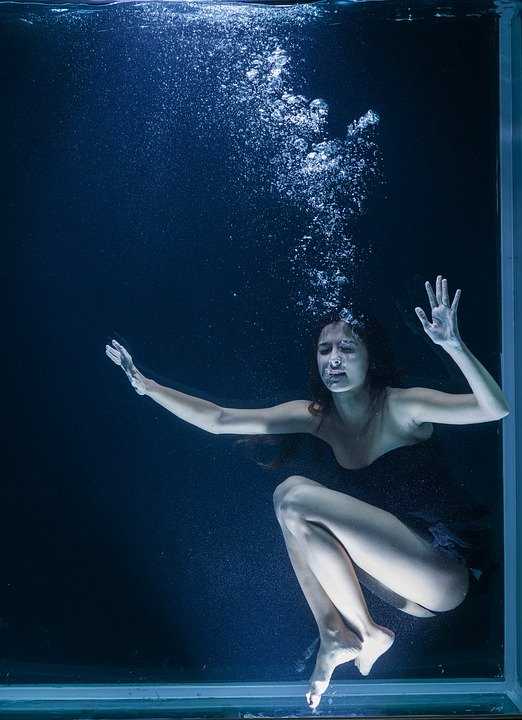 Some situation is perceived calmly, some cause fear, and some panic.
Some situation is perceived calmly, some cause fear, and some panic.
Phobic reactions.
It is very important not to miss the phobic reaction in oneself among all this spectrum of emotions. The most common among them are:
Hydrophobia - emotional request for distance from water. This is a generalized name for the fear of water.
Bathophobia - fear of deep water. Fear of depth often arises against the background of stress received in the water, an unsuccessful attempt to learn to swim. But psychologists also note that a person’s innate anxiety may be the cause. Often it is associated with an unfavorable situation in the family, which leads to distrust of the world in general and fear of the unknown.
Thalassophobia - fear of the sea, open boundless spaces. It manifests itself as severe discomfort and panic at the sight of the sea or when trying to contact the sea. Psychologists believe that the root of the problem may be distrust of the world, as is the case with other hydrophobias.
Ablutophobia - persistent obsessive fear of washing, brushing teeth or washing hands. Sometimes this form of fear is characterized by fear of any toilets and bathrooms. There can be many reasons, for example, it may not even be in the water itself, but in the accompanying stress, something could scare in childhood while washing and bathing in the bathroom.
How to deal with phobic reactions?
If we find one or more of these phobic reactions in ourselves, then it is worth asking ourselves questions:
— Do I really want to get rid of this phobia?
— How does this phobia help me, and in what way does it limit me?
You can answer these questions on your own or together with a psychotherapist. Psychotherapist Natalya Alexandrovna Borodina believes that the fear of water is a matter of trust in the world, other people and oneself, and this is what needs to be worked on in therapy.
Do not be disappointed or reproach yourself if at some point you feel fear, go back up the step to maintain a sense of comfort and safety.

Psychologists also advise starting contact with water in the same way that small children begin it when playing near a pond. Find a situation in which water will not cause fear, in which contact with water will be pleasant. Concentrate on something pleasant, play in the water, go a little deeper, try to lift your feet off the ground.
Don't be discouraged or beat yourself up if you feel fear at some point, go back up the step to keep yourself feeling comfortable and safe. Then you can try to swim at least a small segment at a shallow depth. The main thing is gradualness, do not set yourself too big tasks at once and do not try to overcome fear - act in such a way that there is no fear, but there is a sense of security and pleasure from contact with water.
If it is very difficult to feel safe, then ask someone you trust to insure you. Gradually unlearn being afraid, and everything will work out for you! But we still advise you to contact a psychotherapist, because all phobias are based on experiences in some other area of life, these experiences need to be worked out.
Swimming is a great way to overcome your fear of water. First, just come to the pool and walk around, look at the floating people. Then try to enroll in a swimming school, where a professional trainer will explain to you all the nuances of interaction with water in an easy and accessible way. The support of a trainer will add confidence and help you relax.
The text was created using materials from a lecture by a psychologist-psychotherapist, associate professor of Novosibirsk State University and candidate of psychological sciences Natalya Borodina.
8 types + why it occurs and how to overcome it
Fear of depth is a phobic version of the test of panic fear in relation to water. The fear of being in deep waters has its own individual characteristics and characteristics. It is this topic that will be discussed in this article.
If people are asked the same question, what do they know about the fear of depth, then any of them will limit themselves to only their own answer.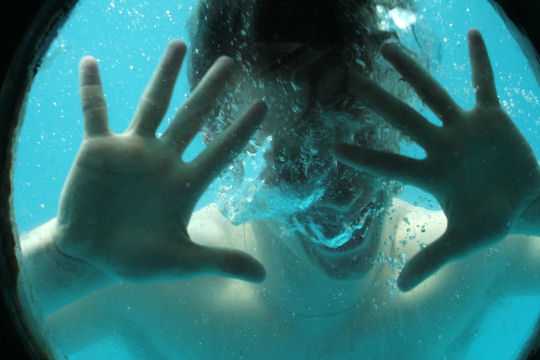 Each of them will have some kind of vivid life event that causes characteristic symptoms. But such a variety of answers will come down to one and the same phenomenon - bathophobia, the emergence of fear of deep places.
Each of them will have some kind of vivid life event that causes characteristic symptoms. But such a variety of answers will come down to one and the same phenomenon - bathophobia, the emergence of fear of deep places.
Among psychologists, this fear is associated with the fear of death - a person fails to take control of the situation into his own hands, as a result of which he can simply disappear, that is, drown. Due to the fact that a person cannot control himself and his own state, not only mental, but also physical, bathophobia is one of the most dangerous obsessive fears. In no case should one confuse the inability to swim, when a person is afraid of water, with a fear of depth. This fear can also be inherent in people who are excellent swimmers.
Table of Contents
Bathophobia
Bathophobia refers to a phobic disorder, and in plain language, the fear of depth. This disorder may appear due to accidents on the water, as a result of which a person experiences strong emotional and psychological upheavals that lead to an unconscious fear of the depths of the waters.
There are other reasons that lead to this disorder: a person has never in his life had to deal with a negative experience associated with depth, but he may have subconscious anxiety. A phobia can be congenital or acquired for some reason. This may include an unfavorable family situation, or lack of trust in the environment, etc.
Bathophobia in a person causes a feeling of an abyss under one's feet, and has a number of the following symptoms:
- attack of sudden panic attacks;
- emotional excitability;
- triggering an alarm at just one thought of depth;
- the appearance of fear of falling into algae and getting entangled in them.
Everyone can have the initial stage of bathophobia. It can manifest itself even at the moment when deep reservoirs are somewhere far away, but a person sees them in pictures or on some kind of video. Also, fear may come when you are in a boat that has sailed far from the coastline, etc.
Fear of water in a child
A child does not realize the true nature of the manifestation of fear of water. He's just scared is all. And the reason for this can be:
- getting into an unusual environment;
- lack of ability to swim;
- the emergence of associations from terrible cartoons or read books;
- occurrence for some reason of bad mood;
- exposure to cold water;
- unpleasant sensation of stones or sand, etc.
Parents in this situation often engage in introducing their child to water, resorting to the so-called "express method", which instills fear even more. And if you repeat it many times, then the association of water and fear is fixed. The complexity of the situation can be aggravated by the mother herself, when negative experiences occur because of her. Although usually the child perceives it as a guarantor of his protection and security, which are very important feelings in the adequate psychological development of the child. If this feeling is lost, then any kid gets a deep stress.
If this feeling is lost, then any kid gets a deep stress.
As a result, the child will not be able to overcome the fear of water, but on the contrary, in his thoughts to affirm that to swim is to experience fear, as he is forced to do it.
Due to such experiments, the baby may be seized with a sudden panic at depth, and this may be a great risk to his life, because in a panic, water is most often inhaled, which can lead to the most sad consequences.
Fear of the depth of the sea
Fear of the depth of the sea is one of the phobias that leads to conflicting opinions about it. Someone expresses the opinion that there are justifications for this fear, and someone is amazed - is it really possible to be afraid of such a luxurious seaside vacation?
This is thalassophobia, that is, a panic fear of the sea element with any of its manifestation symptoms, but the main reason here is swimming. It is so customary that at the sight of water people feel wary, especially when it is in large quantities, and only children and people with mental disorders tend not to be careful in this case while relaxing at sea. But among people there are individuals who are not afraid to challenge the elements of the sea, and swim for long distances in the sea, even despite the waves.
But among people there are individuals who are not afraid to challenge the elements of the sea, and swim for long distances in the sea, even despite the waves.
If a person is overcome by thalassophobia, then he is overwhelmed with feelings of irrational fear in relation to the sea element, and in this state he is deprived of a good rest at a seaside resort. And there is nothing to talk about exciting water sports here.
This phobia is also widespread among children and is not difficult to detect. A child can happily play on the beach, build sand castles, but he is not in the mood for swimming and swimming in the sea. Psychologists assigned their own classification to this phenomenon, which they call neurotic symptoms.
Fear of dark water
In Greek, "estuary" means a harbor or bay, in other words, it refers to bodies of water where the surface of the water is calm. Well, a “phobia” is a condition that causes a feeling of fear. Therefore, limnophobia is nothing more than a fear of the secrets of the depths of lakes, swamps and ponds. People experience a fear of depth before swimming or being directly on the water surface of a lake or pond. There are times when panic fear is caused by just a glance in the direction of these water elements. Such people consider the mirror-like surface of the water to be deceptive and insidious, and in the dark depths of the waters it is full of mysterious and invisible dangers. For those suffering from limnophobia, shallow pools are most suitable, in which the water is clear and the bottom is visible.
People experience a fear of depth before swimming or being directly on the water surface of a lake or pond. There are times when panic fear is caused by just a glance in the direction of these water elements. Such people consider the mirror-like surface of the water to be deceptive and insidious, and in the dark depths of the waters it is full of mysterious and invisible dangers. For those suffering from limnophobia, shallow pools are most suitable, in which the water is clear and the bottom is visible.
This disorder usually occurs in a person as early as childhood:
- when he had to swallow water and could drown while swimming in a village pond;
- either the boat in which he was sailing capsized and was very frightened;
- or because of a friend's joke when he suddenly pulled his legs to the bottom;
- at the sight of a drowned man;
- also have an impact on the appearance of symptoms of the disorder, horror films about monsters that inhabit dark waters, or grandmother's horror stories about evil spirits found in swamps.

Even a mild form of limnophobia causes excessive anxiety and disorientation in people while in the water of the lake.
Fear of sea monsters
Any phobia is characterized by the presence of a strong subconscious fear in relation to any situation or object, resulting in a call to the classic reaction to fight or run away. There is a frantic heart rate, breathing quickens and out of control, there is confusion in thoughts, and the person burns with the only desire to leave this place as soon as possible. It’s good when a person is frightened at the sight of an angry dog - here you can somehow escape. But, when panic fear catches in deep water, it is already much worse.
For example, some people are very afraid of sharks and their carnivorous and sharp teeth. This is a completely natural reaction. But when a diver is overcome by fears, and he cannot enjoy the beauty of coral reefs, then this is already a phobia.
But be that as it may, some divers develop a very strong fear of sharks to the point that they are afraid to swim in an ordinary pool. The reason for this may be the sharks from the movies, where they really show the monsters of the seas.
The reason for this may be the sharks from the movies, where they really show the monsters of the seas.
Fear of getting into the seaweed
There are people who are afraid to swim at depth, they start to panic because of the fear of being swallowed up by the depth. And there are those who are afraid of algae. In this case, one time is enough for a person to become entangled in algae, so that panic fear and fear of depth arise in relation to them.
It is quite natural when a person consciously avoids algae, so as not to fall into their entanglement. This is a normal natural reaction, which in some cases can save a life. Indeed, aquatic vegetation is dangerous for swimmers. But the worst thing can happen when a swimmer in panic fear begins to move chaotically. Therefore, when such a phobia occurs, it is better to refrain from swimming to depth, and especially to algae.
This fear is usually treated with hypnosis.
Phobia to drown
Aquaphobia, like many other disorders, has its own symptoms, which can be both mental and vegetative.
Mental symptoms:
- when water comes into contact with the skin, unpleasant sensations occur;
- fear of depth and fear of open waters;
- fear of swimming, bathing and bathing;
- fear of leaving the home environment in case of a possible thunderstorm or rain;
- the occurrence of an alarm before consuming any liquid.
Symptoms of a physical nature (they come on when thinking about impending contact with water, deep places, swimming):
- starts to feel sick;
- dizzy;
- starts to have a headache;
- pressure rises;
- Sweat profusely.
If the phobia is not treated for a long time, and the aquaphobe ends up in the water, he starts to panic, convulsions may occur. At this time, there is a complete shutdown of consciousness, the situation gets out of control, the body does not obey, thoughts do not work. A form of severe aquaphobia is very dangerous to the life of any person.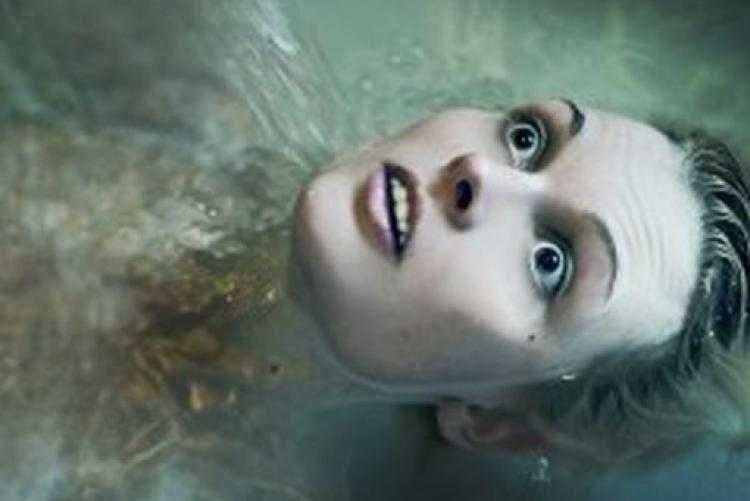 That is why it is necessary to get rid of it in the bud.
That is why it is necessary to get rid of it in the bud.
Why fear of depth arises
Bathophobia is most often destructive and objective. The destructive fears are related to the fears that arise as a result of irrational thoughts that monsters find shelter in the depths, which are waiting for the moment to attack a person. There are times when people subject to this phobia hear the voices of marine life and even mermaids when they swim away from the coast, and for some, the ocean is a thinking creature that is hostile to humans.
Objective fears should be understood as the fear of depth, when a person does not know how to swim well or is afraid of drowning. The emergence of this phobia may be due to cases when he could drown or became an eyewitness to this tragedy. A person has a fear of a real danger - to become a drowned man, or to be crippled by the blades of a ship, or to collide with a shark. Often this phobia appears literally out of the blue from a random thought, when a person is above a deep space, and it seems to him endless. This is due to excessive anxiety, and even hereditary.
This is due to excessive anxiety, and even hereditary.
How to overcome the fear of depth
What is the fear of depth and how to deal with it? The origin of this phobia has a deep psychological level, and it is quite difficult to overcome it. But there are some guidelines that can go a long way towards facilitating the perception of deep places and water.
Understand the aquatic environment . Before you start long trainings on self-education and liberation from annoying fears, you need to have an idea about the water element. In order to understand this more substantially, to get acquainted with scientific and reliable knowledge about the water element, it will be useful to watch information programs, read books, and get acquainted with water sports.
Find positive . To enter into a good relationship with water, you need to become familiar with its positive and interesting qualities. In this case, you need to turn to sources of information that will acquaint you with the beneficial properties of water, marine life, with how you gained self-confidence and got rid of some diseases with the help of water.


